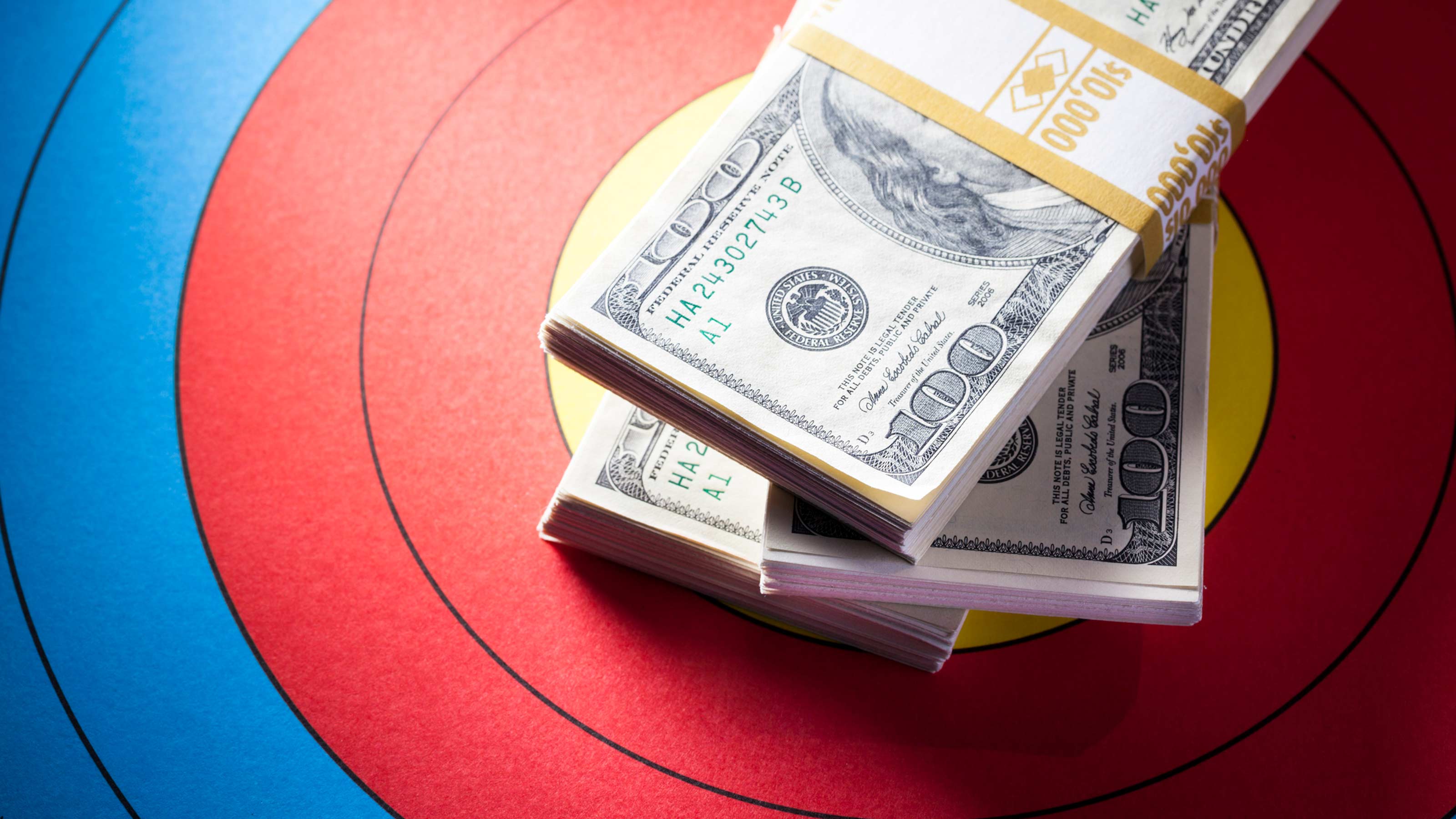Is a Target Date Fund Right for You?
You're busy, and poring over investments is a pain. Wouldn't a target date fund be easier? Take a look at their pros and cons to see if incorporating one (or more?) into your retirement plan makes sense for you.


What year do you want to retire? That single question is the concept behind target date funds, which are quickly growing in popularity.
Target date funds debuted in 1994 as a simple option for retirement savers. They are mutual funds, based on the year the saver plans to retire. Let’s say you are 50 years old and you plan to retire at age 65. You would select the target date fund for the year 2036 — or more likely 2035, as target date funds tend to come in multiples of five. The target date fund is actively managed for the rest of your life, rebalancing to adjust risk as you get older and closer to retirement.
As more retirement savers turn to this option, there are some pros and cons to keep in mind.

Sign up for Kiplinger’s Free E-Newsletters
Profit and prosper with the best of expert advice on investing, taxes, retirement, personal finance and more - straight to your e-mail.
Profit and prosper with the best of expert advice - straight to your e-mail.
Some Pros of Target Date Funds
Conceptually, target date funds are great; they are a simple solution for people who either don’t want to deal with investing or who are intimidated by money. They are a good option for investors who are hands off and who wouldn’t rebalance their investments on their own. Target date funds are also good for DIY investors, because they are a more comprehensive strategy than picking on past performance, which is the way do-it-yourselfers often pick investments. They would pick the stocks that did well in the last quarter or year, which is not a successful strategy, because past performance does not necessarily indicate future growth.
Some Cons of Target Date Funds
Target date funds are not individualized for a person’s specific situation; they treat every person who will retire in a certain year as the same. However, every person is not the same. They have different income needs, lifestyles and resources in retirement. People should have an individualized income plan for retirement, and target date funds can’t do that.
Another con is that many people are not digging deep enough to find the best target date funds when it comes to internal costs, asset allocation and how the funds are managed. They are also not taking the time to figure out how to incorporate a target date fund into an overall retirement strategy. If you have a Roth or traditional IRA, how are the two complementing each other? Target date funds should be part of a complete retirement plan.
Things to Consider
Diversification
To be truly diversified, retirement savers need to divvy up their money between the different types of asset classes — including liquid assets you can access at any time (like savings accounts and short-term CDs), growth assets (like mutual funds) and safe assets (longer-term CDs and possibly annuities).
Having said that, it’s also important to diversify your assets within each category. So, although target date funds have their advantages, putting 100% of your holdings in a single fund may be overdoing it. Anytime you’re putting all your eggs in one basket, it’s not a great solution.
When looking for ways to diversify your target date funds, consider diversifying your providers. Target date funds look different with each provider, for example Vanguard, Fidelity and T. Rowe Price. They are made up of different percentages of equities, and some are actively managed while others are entirely index funds. If you have the option, I recommend investing in target date funds for the same year from different providers.
Another simple way to diversify is to choose different years for your target date funds, for example 2045 and 2050. Theoretically, the 2050 target date fund would have higher risk. That means you would get better rewards during good years on Wall Street. You would also get a bigger sting during a bad year.
Fees
Investors should be looking at a target date fund’s prospectus and cost. You can go to a website like FINRA, plug in a fund and find out important information that’s easy to digest. I am very fee sensitive, so I like to look at the internal cost. There is good news on this front: Target date fund fees have been dropping in recent years. As of 2020, the average fee on a $10,000 investment is about $52. That’s compared with $103 in 2009. Is a fund actively managed or is it more passive? If a fund is actively managed, there is a money manager buying and selling equities in that fund. A passive fund will have more index funds and usually carries lower fees.
Risk
Some target date funds take on more risk than others. It’s important to research this to find out the level of risk you are taking on. There are great tools to analyze risk, like Riskalyze or AssetLock. A financial adviser can help by utilizing these tools to research the risk associated with each fund.
Generally, if a target date fund is being managed properly, it will have less risk as you approach the target date. You don’t want to take on more risk than you are comfortable with. That can make investors nervous when there’s a drop on Wall Street, and they end up selling at the wrong time.
Asset Allocation
You may also want to consider what companies and industries the target date fund is invested in. Some socially conscious investors may not want their money going into particular industries, like tobacco, alcohol or ammunition. If this is important to you, do your research on the fund. Dig into the fund’s holdings by doing some online research. You can find out which companies the fund is invested in and can shop around to find a target date fund that aligns with your objectives.
Younger generations are more interested in socially responsible investing, and we may see socially responsible target date funds in the near future.
Final Thoughts for Retirement Savers
If you are the type of investor who wants to “set it and forget it,” target date funds are a simple option you should explore. The bottom line: It’s important you commit to saving for your future. Keep putting money into your retirement accounts during both good times and bad. You won’t regret it.
Get Kiplinger Today newsletter — free
Profit and prosper with the best of Kiplinger's advice on investing, taxes, retirement, personal finance and much more. Delivered daily. Enter your email in the box and click Sign Me Up.

Tony Drake is a CERTIFIED FINANCIAL PLANNER™ and the founder and CEO of Drake & Associates in Waukesha, Wis. Tony is an Investment Adviser Representative and has helped clients prepare for retirement for more than a decade. He hosts The Retirement Ready Radio Show on WTMJ Radio each week and is featured regularly on TV stations in Milwaukee. Tony is passionate about building strong relationships with his clients so he can help them build a strong plan for their retirement.
-
 Get Netflix, Hulu and Apple TV Plus for Free by Joining T-Mobile
Get Netflix, Hulu and Apple TV Plus for Free by Joining T-MobileT-Mobile customers save up to $35/month on streaming services thanks to this Netflix, Hulu and Apple TV Plus bundle. Here’s how to get it.
By Rachael Green
-
 Missed Tax Day? You Could Still Be Eligible for These Valuable Tax Refunds
Missed Tax Day? You Could Still Be Eligible for These Valuable Tax RefundsTax Refunds As many as one million taxpayers could be missing out on a significant tax refund.
By Gabriella Cruz-Martínez
-
 Going to College? How to Navigate the Financial Planning
Going to College? How to Navigate the Financial PlanningCollege decisions this year seem even more complex than usual, including determining whether a school is a 'financial fit.' Here's how to find your way.
By Chris Ebeling
-
 Financial Steps After a Loved One's Alzheimer's Diagnosis
Financial Steps After a Loved One's Alzheimer's DiagnosisIt's important to move fast on legal safeguards, estate planning and more while your loved one still has the capacity to make decisions.
By Thomas C. West, CLU®, ChFC®, AIF®
-
 How Soon Can You Walk Away After Selling Your Business?
How Soon Can You Walk Away After Selling Your Business?You may earn more money from the sale of your business if you stay to help with the transition to new management. The question is, do you need to?
By Evan T. Beach, CFP®, AWMA®
-
 Two Don'ts and Four Dos During Trump's Trade War
Two Don'ts and Four Dos During Trump's Trade WarThe financial rules have changed now that tariffs have disrupted the markets and created economic uncertainty. What can you do? (And what shouldn't you do?)
By Maggie Kulyk, CRPC®, CSRIC™
-
 I'm Single, With No Kids: Why Do I Need an Estate Plan?
I'm Single, With No Kids: Why Do I Need an Estate Plan?Unless you have a plan in place, guess who might be making all the decisions about your prized possessions, or even your health care: a court.
By Cynthia Pruemm, Investment Adviser Representative
-
 Most Investors Aren't as Diversified as They Think: Are You?
Most Investors Aren't as Diversified as They Think: Are You?You could be facing a surprisingly dangerous amount of concentration risk without realizing it. Fixing that problem starts with knowing exactly what you own.
By Scott Noble, CPA/PFS
-
 Will My Children Inherit Too Much?
Will My Children Inherit Too Much?If you worry about how your children will handle an inheritance, you're not alone. Luckily, you have options — from lifetime gifting to trusts — that can help.
By Mallon FitzPatrick, CFP®, AEP®, CLU®
-
 Charitable Giving Lessons From Netflix's 'Apple Cider Vinegar'
Charitable Giving Lessons From Netflix's 'Apple Cider Vinegar'Charity fraud is rife, and a Netflix series provides a timely warning about donating money to a good cause without looking into its background.
By Peter J. Klein, CFA®, CAP®, CSRIC®, CRPS®